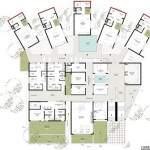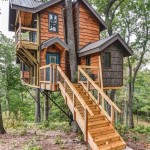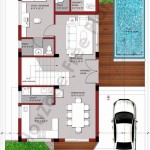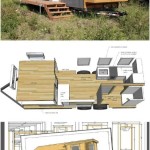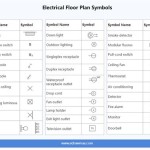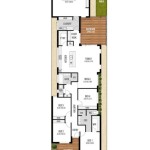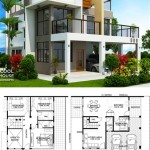Low Construction Cost House Plans in Oregon: Navigating Affordable Homeownership
The dream of homeownership in Oregon, with its stunning landscapes and vibrant communities, can often feel out of reach due to escalating construction costs. However, with careful planning, strategic design choices, and a focus on efficient resource utilization, building a low-cost house in Oregon is achievable. This article explores key considerations, practical approaches, and specific design elements that contribute to minimizing construction expenses while adhering to Oregon's building codes and environmental standards.
Understanding the Factors Influencing Construction Costs in Oregon
Numerous factors contribute significantly to the overall cost of building a home in Oregon. Understanding these drivers is crucial for effective cost management throughout the project.
Land Acquisition: The price of land is often the biggest single expense. Location, size, zoning regulations, and accessibility to utilities all dramatically impact land value. Areas closer to urban centers or with desirable views command higher prices. Opting for land in less developed areas or smaller lot sizes can significantly reduce this initial investment.
Materials: Lumber, concrete, roofing, insulation, and siding constitute a substantial portion of the construction budget. Fluctuations in commodity prices, transportation costs, and supply chain disruptions can influence material expenditures. Sourcing materials locally, utilizing readily available options, and exploring cost-effective alternatives can mitigate these expenses.
Labor: Skilled labor is essential for quality construction. Oregon's prevailing wage laws and the availability of qualified tradespeople influence labor costs. Obtaining multiple bids from reputable contractors, clearly defining the scope of work, and employing efficient construction methods can help optimize labor expenses.
Permitting and Fees: Building permits, inspections, and impact fees are mandatory regulatory costs imposed by local jurisdictions. These fees vary depending on the location, size, and complexity of the project. Thoroughly researching permit requirements and budgeting for these expenses is essential for avoiding unexpected financial burdens.
Design Complexity: Intricate architectural designs, custom features, and unconventional layouts inevitably increase construction costs. Simpler, more streamlined designs that utilize standard building practices are inherently more cost-effective.
Site Preparation: Clearing, grading, excavation, and foundation work can be expensive, especially on challenging terrain. Minimizing site disturbance, adapting the design to the natural topography, and choosing appropriate foundation systems can reduce site preparation costs.
Energy Efficiency Standards: Oregon has stringent energy efficiency requirements in its building codes. While these measures contribute to long-term savings on utility bills, they can increase upfront construction costs. Utilizing passive solar design principles, selecting energy-efficient appliances, and opting for cost-effective insulation materials can help meet these standards without breaking the bank.
Strategies for Low-Cost House Plan Design
The design phase is arguably the most critical stage for controlling construction costs. Thoughtful design choices can significantly impact the final price of the home without compromising functionality or aesthetics.
Simplicity and Efficiency: Prioritize simple, rectangular or square footprints. Avoid complex rooflines, unnecessary additions, or intricate detailing. A compact design minimizes the exterior surface area, reducing material requirements and lowering heating and cooling costs. Open floor plans can maximize usable space and create a sense of spaciousness without increasing the overall square footage.
Standardization: Utilize standard building materials, sizes, and dimensions. This reduces waste, simplifies construction, and makes it easier to source materials at competitive prices. Stock windows, doors, and cabinets are generally more affordable than custom-made options.
Prefabrication and Modular Construction: Consider prefabricated or modular construction techniques. These methods involve building components or entire sections of the house in a factory setting, which can significantly reduce on-site labor costs and construction time. Modular homes are often more affordable than traditional stick-built homes, while offering comparable quality and design flexibility.
Efficient Space Planning: Carefully plan the layout to maximize functionality and minimize wasted space. Multi-purpose rooms, built-in storage, and efficient circulation patterns can make a smaller home feel larger and more comfortable. Consider the needs of the occupants and prioritize essential features over non-essential amenities.
Passive Solar Design: Incorporate passive solar design principles to reduce reliance on mechanical heating and cooling systems. Orient the house to maximize solar gain during the winter and minimize solar gain during the summer. Use overhangs, awnings, and deciduous trees to provide shade during the hottest months. Position windows strategically to promote natural ventilation.
Material Selection: Choose durable, cost-effective, and locally sourced materials. Explore alternatives to traditional lumber, such as engineered wood products, recycled materials, or salvaged materials. Consider using cost-effective siding options, such as vinyl, fiber cement, or wood siding. Opt for durable and low-maintenance roofing materials, such as asphalt shingles or metal roofing.
Minimize Customization: While customization can personalize a home, it often adds significant costs. Prioritize essential customizations and limit non-essential extras. Consider adding customizations later as budget allows.
Specific Design Elements for Cost Reduction
Certain design elements can contribute significantly to reducing construction costs without sacrificing functionality or aesthetics.
Foundation: Slab-on-grade foundations are generally the most cost-effective option, especially on level sites. They eliminate the need for excavation and concrete walls, reducing both material and labor costs. Crawl space foundations are a viable alternative, providing access for utilities and ventilation. Full basements are the most expensive foundation option due to the extensive excavation and concrete work required.
Roof: Simple gable or hip roofs are the most cost-effective options. Avoid complex rooflines with multiple gables, dormers, or valleys. Opt for standard roof pitches and readily available roofing materials. Metal roofing offers durability and longevity but can be more expensive upfront than asphalt shingles.
Exterior Walls: Stick-built framing with standard lumber sizes is a common and cost-effective wall construction method. Consider using 2x6 framing instead of 2x4 framing to increase insulation value and reduce energy costs. Insulated concrete forms (ICFs) offer excellent insulation and soundproofing but can be more expensive than traditional framing.
Windows and Doors: Choose standard sizes and configurations of windows and doors. Vinyl windows are generally more affordable than wood or aluminum windows. Select energy-efficient windows with low-E coatings to reduce heat loss and gain. Consider using sliding glass doors instead of French doors to save space and reduce costs.
Interior Finishes: Opt for cost-effective interior finishes, such as drywall, paint, and laminate flooring. Avoid expensive tile, hardwood, or custom millwork. Install simple trim details and use standard cabinet designs. Consider using reclaimed or salvaged materials for flooring, trim, or fixtures.
Plumbing and Electrical: Minimize the number of plumbing fixtures and keep plumbing runs short and direct to reduce material and labor costs. Use standard electrical wiring and fixtures. Install energy-efficient lighting and appliances. Consider using tankless water heaters to save energy and space.
Landscaping: Native landscaping can significantly reduce water consumption and maintenance costs. Choose drought-tolerant plants that are adapted to the local climate. Use gravel or mulch instead of expensive paving materials. Install a simple irrigation system to conserve water.
By carefully considering these factors and incorporating cost-effective design elements, it is possible to build a low-cost house in Oregon that is both functional and aesthetically pleasing. The key is to prioritize needs over wants, embrace simplicity, and utilize readily available resources efficiently.

Affordable House Plans Our Est To Build Blog Homeplans Com

Affordable House Plans Our Est To Build Blog Homeplans Com
What Is The Est Type Of House To Build Blog Floorplans Com

What Is The Est Type Of House To Build Blog Floorplans Com

Low Cost House Designs Small Budget Plans Houseplans Com

What Is The Est Type Of House To Build Blog Floorplans Com

Affordable House Plans Our Est To Build Blog Homeplans Com

What Is The Est Type Of House To Build Blog Floorplans Com
Ranch Style House Plan 1 Beds Baths 896 Sq Ft 771 Dreamhomesource Com

Custom Home Builders Reality Homes Oregon And Idaho

